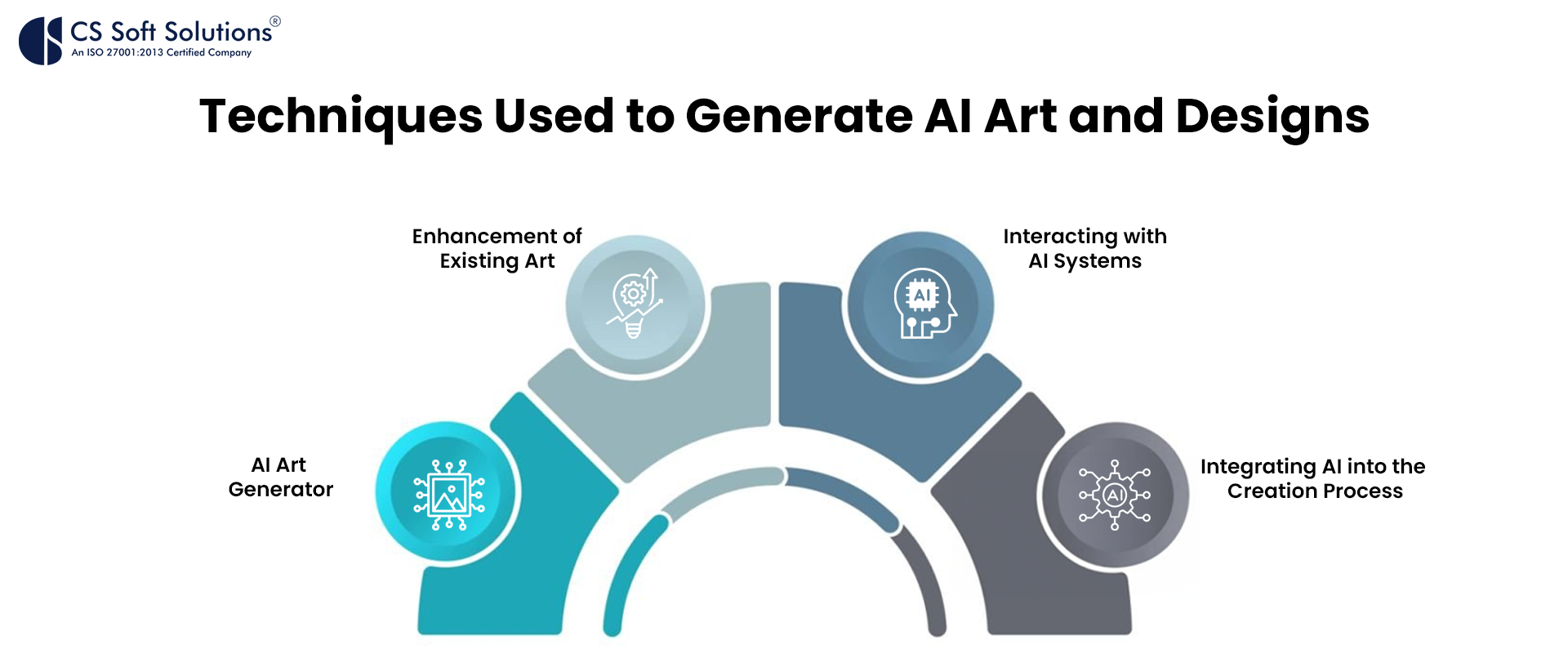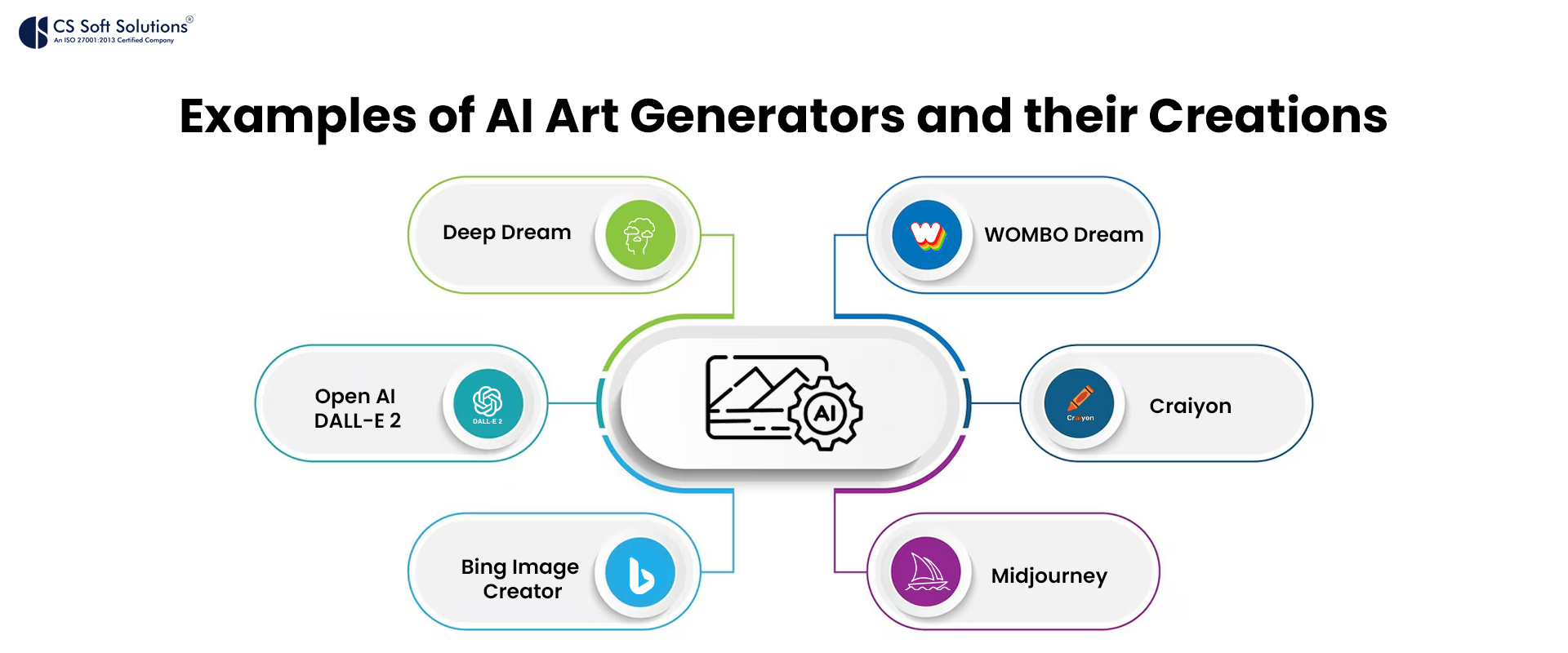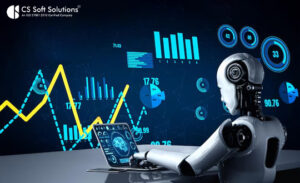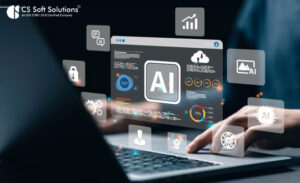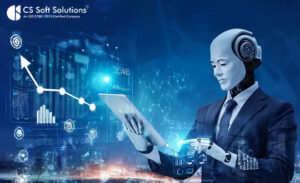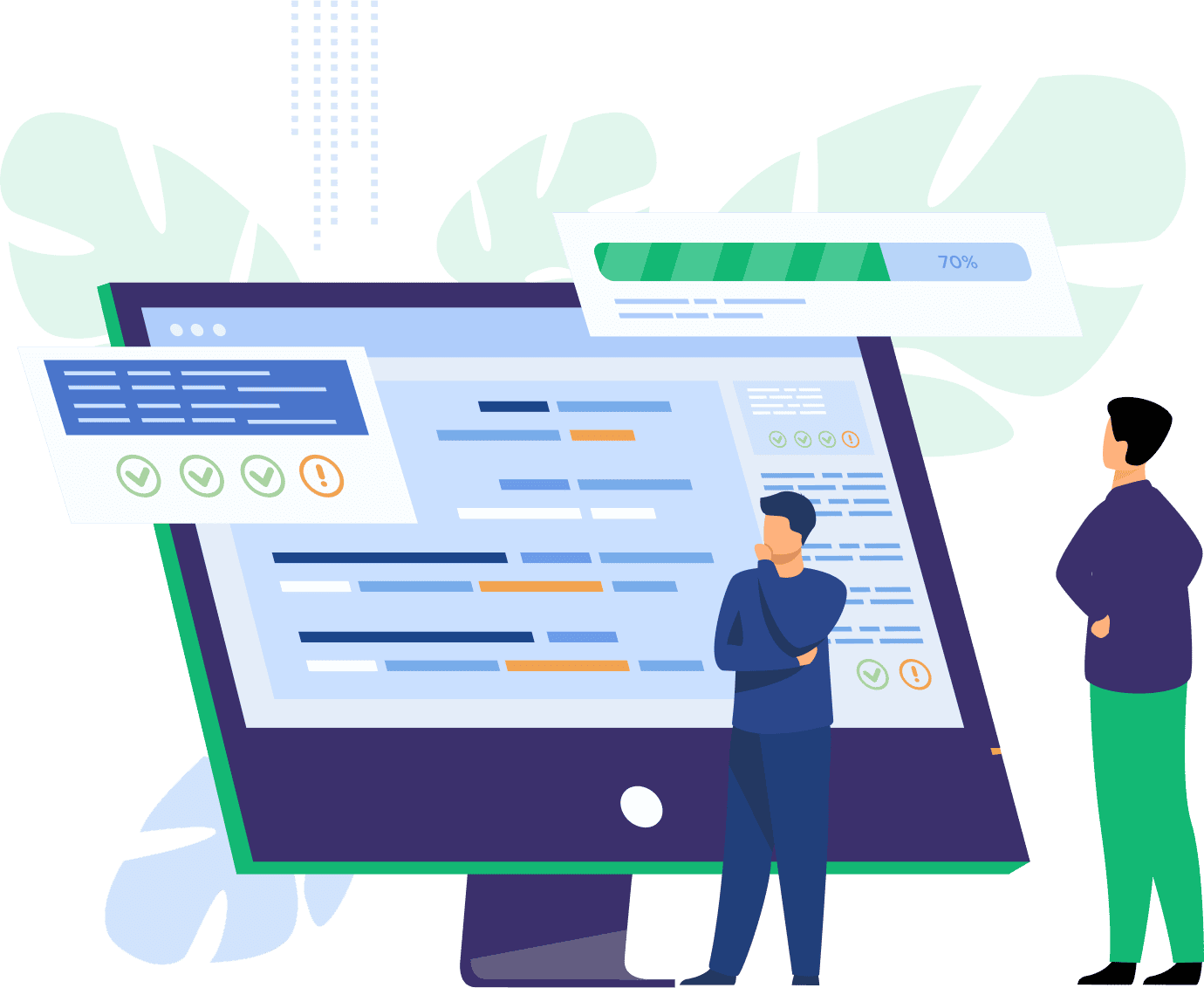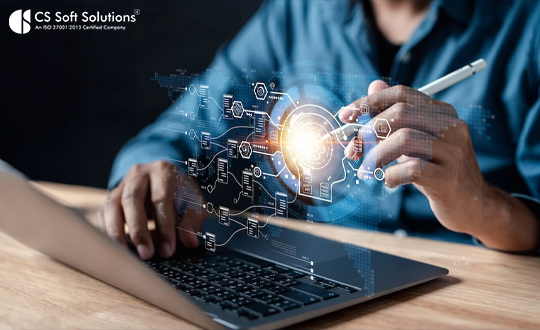
In this blog, we’ll explore what AI-Generated Art Development is, how it works, the technology behind it, the potential it may have in shaping the future of art, and how businesses can avail themselves of AI-Generated Art Development through advanced AI consulting services, allowing businesses to boost their productivity while being one step ahead in an ever-changing marketplace. So, let’s get started!
The Genesis of AI Art
AI heavily influences or controls AI-generated art. The complex algorithms, such as artificial neural networks, deep learning, and machine learning, create AI systems. The systems learn from large data input of all kinds of artworks, various styles, periods, and mediums. Through the process of learning, AI makes its original paintings, drawings, and digital and multimedia art.
How Does AI-Generated Art Development Work?
AI art generators use deep learning algorithms to automatically produce original artwork using large datasets of existing paintings, drawings, and other forms of artistic representations as references to help the program distinguish between the variances of different art styles and techniques. The more diverse the dataset used, the better it enables the AI to learn about the numerous styles and techniques.
AI art generators work on the neural network, a form of learning whereby the program is taught patterns, features, and relationships in the data. Once learned, it can then apply the principles to produce new art based on these elements.
Techniques Used to Generate AI Art and Designs
In general, we do not have professional artists creating AI artwork. It is due to the quality of suggestions and complicated pipelines fueling AI that AI art looks unique and beautiful. Text-to-image AI models are some of the most common and straightforward ways to generate AI art as of today. Other than that, there are a few other AI art generation techniques one can choose from:
- AI Art Generator: It uses the text-to-image concept which has been right at the forefront in bringing digital art worldwide. These employ compelling word descriptions to create artwork. These systems then deploy ML (machine learning) techniques and deep neural networks to generate customized artworks based on the user’s view.
- Enhancement of Existing Art: For AI-generated art, the system would look through existing art for patterns before creating new art. For example, a style transfer algorithm can help in transferring visual styles to assemble an item that looks pretty much the same. Similarly, an image filtering method might create a few new versions of that original image.
- Interacting with AI Systems: This methodology involves the installation of AI algorithms that will result in a set of possible designs and components. These alternatives can be searched through, and the choices can be included in one’s artwork if they are interested in the same.
- Integrating AI into the Creation Process: AI enhances the creative process and produces novel art. Additionally, if the input criteria are proper, AI algorithms can suggest a successful color palette, composition, and sketch. This brings a new dimension to the generation of art and helps in producing the original artwork.
Examples of AI Art Generators and their Creations
There are many development tools for AI-generated art nowadays. Each tool features unique abilities and capabilities. Some examples include the following:
- Deep Dream: Developed by Google, deep learning algorithms make normal photos appear trippy and bizarre artworks.
- Open AI DALL-E 2: This is the upgraded version of DALL-E. DALL-E, for instance, is made famous with the aid of highly accurate images, and input options that give detail. For every credit, it generates four images.
- Bing Image Creator: This is the DALL-E powered AI art generator, directly accessible through Bing Chat and even in the browser. It is highly convenient and easy to use, making it ideal for simple use in creating AI-generated art.
- WOMBO Dream: This AI art generator is well-known for its realistic rendering and multiple templates. It allows users to remix their images, offering a unique touch to their tasks.
- Craiyon: The AI art generator provides the user with limitless prompts and offers a very easy interface for people who have just started using AI-generated art.
- Midjourney: This AI art generator is renowned for its quality photos, and it’s known to have an active Discord community. Its capability to generate art for several applications, from digital marketing campaigns to social media posts, has gained popularity.
The Future of AI-Generated Art
As AI technology progresses, the opportunities for AI art generators are endless. The effect on art creation could be enormous with increased processing power, better algorithms, and more advanced deep-learning models.
Another possible impact of AI art generators is their use in teaching art. As more artwork begins to surface via AI, art schools should include AI in their curriculum. This will shape the skills required for artists to be successful in the coming years, with an increased emphasis on understanding and using AI technologies.
The prospect of future development regarding AI art generators is bright as well as dubitable. But one thing will be clear at least- what changes AI technology holds for the world of art – the importance of the AI art generators will certainly prevail in the days to come.
Conclusion
AI-generated art development, thus, becomes a juncture of technology and imagination-an exciting frontier in the long evolution of human creativity. This is either a revolution or a threat to the ways of old-school artistic practice thing is for sure businesses can grow with the development of AI capabilities through AI consulting services. AI can change the world of art in significant and unforeseen ways.
With the dawn of this new era, there are endless possibilities for artistic expression. The conversation between human creativity and machine intelligence is just getting underway. It’s not just about the machines but about how we, as humans, choose to use our potential. Art in the future will be a fusion of human intuition and machine learning where technology and imagination come together to form something entirely new.
If you’re looking for an AI-generated art development company, join the expertise at CS Soft Solutions India Pvt. Ltd. to unlock the potential of AI-generated art development. Discover our services or book a consultation today to learn more about how this can help enhance business efficiency.





